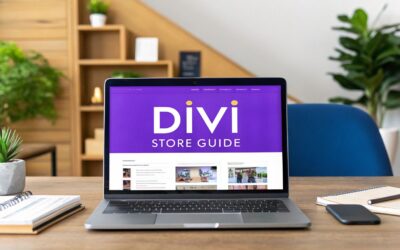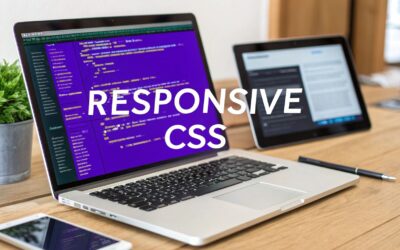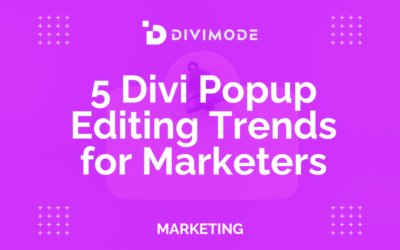Popup marketing has been a controversial topic in advertising for years, with some users claiming it can be intrusive and annoying for website visitors.
However, it’s essential to understand that facts and statistics surrounding popup marketing prove quite the opposite.
This blog post will look at some of the most recent and relevant popup marketing statistics, including conversion rates, click-through rates, and user engagement.
By the end of this article, you’ll have a better understanding of the potential benefits of popup marketing and the steps you can take to ensure popup effectiveness.
Table of Contents
- FAQs About Popups and Conversion Rates
- The Average Popup Conversion Rate
- Optimizing Popups for Mobile
- Images as a Must-Have Popup Element
- The Highest-Performing Popups
- The Number of Fields in Popups
- Over to You
FAQs About Popups and Conversion Rates
What is popup marketing?
Popup marketing refers to the use of pop-up windows or overlays on a website to capture visitor attention and promote a specific offer or call-to-action.
Popups are designed to appear prominently on the screen and encourage visitors to take a desired action, such as subscribing to a newsletter, making a purchase, or providing their contact information.
Are popups annoying to website visitors?
Popups can be perceived as annoying if not implemented properly. However, when used strategically and thoughtfully, popups can provide value to visitors by offering relevant content, discounts, or exclusive information.
Best practices for popup implementation include using an exit intent trigger, providing a clear value proposition, ensuring mobile-friendliness, and allowing easy dismissal.
How can I make my popups more effective?
To make your popups more effective, consider the following tips:
- Provide Value: Offer visitors something valuable, such as exclusive content, discounts, or free resources, in exchange for their engagement or contact information.
- Clear Call-to-Action: Make sure your popup has a clear and compelling call-to-action that guides visitors to take the desired action.
- Design and Branding: Create visually appealing popups that align with your website’s branding and design. Use eye-catching colors, high-quality images, and concise copy.
- Targeting and Personalization: Segment your audience and personalize your popups based on visitor behavior, demographics, or other relevant data. This helps deliver more relevant and engaging messages.
- Timing and Frequency: Experiment with the timing and frequency of your popups. Displaying them after visitors have spent some time on your site can increase their effectiveness.
- A/B Testing: Test different variations of your popups to identify what works best for your audience. Analyze metrics like conversion rates, click-through rates, and bounce rates to make data-driven decisions.
- Mobile Optimization: Ensure your popups are mobile-friendly and display properly on various devices and screen sizes.
Are popups still effective in 2023?
Yes, popups can still be effective in 2023 if used strategically and thoughtfully. While some users may find popups intrusive, well-designed and targeted popups can provide value to visitors and drive conversions.
To maximize their effectiveness, it is important to consider best practices, such as personalization, timing, mobile optimization, and providing clear value propositions.
The Average Popup Conversion Rate
As reported by Optimonk, the average pop-up conversion rate is 11.09%. However, this can vary depending on the types of popups that you will use on your Divi website.
For example, the newsletter subscription popup above can convert more users than a cart abandonment popup.
Some other factors that can influence the popup’s conversion rates include the design and layout of the pop-up, the timing and frequency, the relevance of the offer, and the user’s current browsing behavior or engagement with the website.
Moreover, targeting can also play a role in conversion rates. This is where A/B testing and optimization can help you identify which popup elements are most effective in increasing conversions.
Optimizing Popups for Mobile
According to Getsitecontrol, popups displayed on mobile devices delivered better average click-rates when compared to desktops. And as per Drip, popups convert better on mobile (5.8%) than they do on desktop (3.11%).
Of course, the usage of mobile devices increases by the day. However, since mobile screens are smaller than desktop, this is where popups take up a larger portion of the screen, making them more prominent and harder to ignore.
Additionally, mobile users may be more likely to be in a “micro-moment” where they are looking for a specific piece of information or ready to take a quick action, making them more likely to engage with the pop-up.
Images as a Must-Have Popup Element
Based on research conducted by Drip, popups that include images convert better than popups that don’t have images by 83.5%.
Images can make a popup visually appealing and grab the user’s attention more effectively.
Additionally, in some cases such as product sales, images can convey the message or offer more clearly than text alone, making it more likely that the user will interact with the pop-up.
The Highest-Performing Popups
According to SumoMe, the average conversion rate of the very best popups was 9.28%.
This is a conversion rate that would make your Divi popups one of the most effective on the web.
If that’s the case, it means that you’ve effectively and efficiently communicated a clear and relevant message or offer that resonates with your target audience.
The Number of Fields in Popups
As researched by Wisepops, popups with only one signup field have the highest conversion rate of 4.3%, followed by popups with four fields with 3.45%.
This makes total sense. The more fields a popup has, the more friction it creates for the user. This can lead to a lower conversion rate as users may be less likely to complete the form if it requires too much effort.
It’s important to strike a balance between the amount of information being requested and the user’s willingness to provide it, while also making the form easy to use and understand.
Over to You
In summary, using popup marketing can be a powerful way to increase conversions and engagement for your Divi website.
The statistics and the linked source above can provide you with more insights on how to optimize popups, such as targeting the right audience, timing the popups correctly, and designing them in an appealing and user-friendly way.
It’s important to continuously analyze and track the effectiveness of popup marketing campaigns by using key metrics such as conversion rates, click-through rates, and bounce rates, in order to make data-driven decisions.
We wish you a successful and high-converting 2023! Start your popup marketing campaigns with Divi Areas Pro.

Try Divi Areas Pro today
Sounds interesting? Learn more about Divi Areas Pro and download your copy now!
Many pre-designed layouts. Automated triggers. No coding.
Click here for more details






